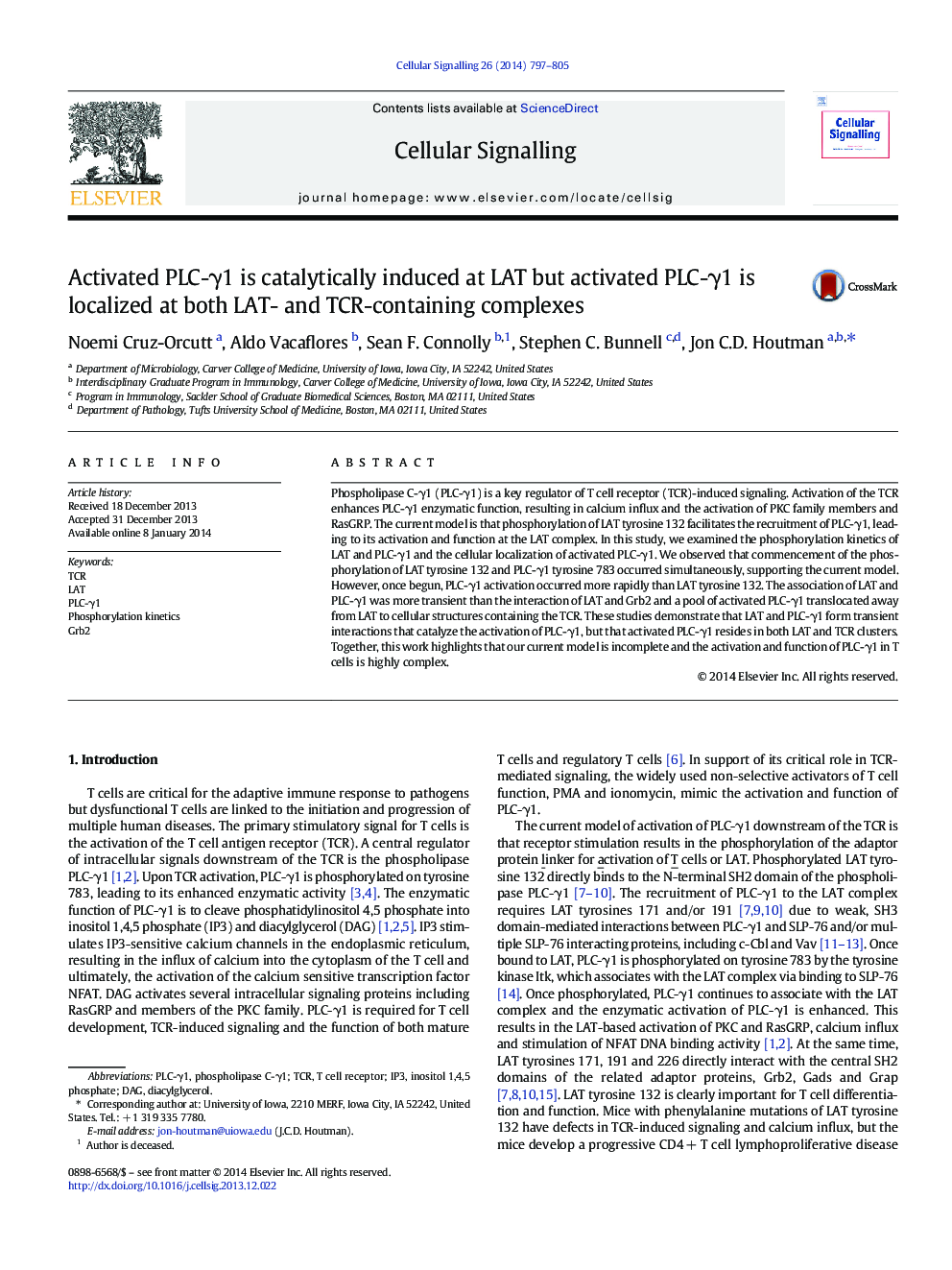| Article ID | Journal | Published Year | Pages | File Type |
|---|---|---|---|---|
| 10814969 | Cellular Signalling | 2014 | 9 Pages |
Abstract
Phospholipase C-γ1 (PLC-γ1) is a key regulator of T cell receptor (TCR)-induced signaling. Activation of the TCR enhances PLC-γ1 enzymatic function, resulting in calcium influx and the activation of PKC family members and RasGRP. The current model is that phosphorylation of LAT tyrosine 132 facilitates the recruitment of PLC-γ1, leading to its activation and function at the LAT complex. In this study, we examined the phosphorylation kinetics of LAT and PLC-γ1 and the cellular localization of activated PLC-γ1. We observed that commencement of the phosphorylation of LAT tyrosine 132 and PLC-γ1 tyrosine 783 occurred simultaneously, supporting the current model. However, once begun, PLC-γ1 activation occurred more rapidly than LAT tyrosine 132. The association of LAT and PLC-γ1 was more transient than the interaction of LAT and Grb2 and a pool of activated PLC-γ1 translocated away from LAT to cellular structures containing the TCR. These studies demonstrate that LAT and PLC-γ1 form transient interactions that catalyze the activation of PLC-γ1, but that activated PLC-γ1 resides in both LAT and TCR clusters. Together, this work highlights that our current model is incomplete and the activation and function of PLC-γ1 in T cells is highly complex.
Keywords
Related Topics
Life Sciences
Biochemistry, Genetics and Molecular Biology
Biochemistry
Authors
Noemi Cruz-Orcutt, Aldo Vacaflores, Sean F. Connolly, Stephen C. Bunnell, Jon C.D. Houtman,
